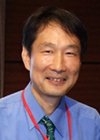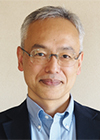The 29th International Conference on Low Temperature Physics (LT29) holds public lectures to share scientific findings obtained through research with the public, and to ask for their understanding and support for our scientific activities.
In this public lecture, we are pleased to have two of Japan's leading researchers, Dr. Hidenori Takagi and Dr. Yasunobu Nakamura, who will talk about their fascinating research on the physical phenomenon known as superconductivity, their dreams as researchers, and their predictions for how the results of today's research will change the future.
To prevent the spread of coronavirus infection, the meeting will be held online using ZOOM. Everyone is welcome to join, so please register by clicking on the link below.
Date: August 21, 2022, 13:00-15:00
Place: The event will be held online using ZOOM to prevent the spread of COVID19 infection.
Language: Japanese
How to participate:
Please register for the public lecture using the application form. ZOOM account information will be sent to your registered e-mail address.
https://forms.gle/yexwbYnf8zPHGGc96

Lecturer: Hidenori Takagi,
(Director, Max-Planck institute for Solid State Research & Professor, Graduate School of Science, The University of Tokyo)
Abstract:
Superconductivity is a phenomenon in which the electrical resistance of a cooled metal suddenly becomes zero below a certain temperature (transition temperature Tc). The superconducting state appears when electrons pair up and respect a quantum mechanical collective discipline. Magnetic materials, such as copper and iron compounds, and hydrogen compounds placed under high pressure exceeding 1,000,000 atmospheres were discovered to exhibit superconductivity at extremely high temperatures, reaching almost room temperature in some cases. Heated debates are currently ongoing at the forefront of research to unravel the mystery of why pairs can form in these materials at high temperatures. The magic exhibited by superconductors, such as zero resistance, enables power transmission with small energy loss, magnets used in medical MRIs and magnetic levitation trains, highly sensitive magnetic sensing, devices with extremely low power consumption, and quantum computers, all of which support the development of a green society and an information society. I will present such mystery and magic of superconductivity.

Lecturer: Prof. Yasunobu Nakamura
(Director, RIKEN Center for Quantum Computing & Professor, Graduate School of Engineering, The University of Tokyo),
Abstract:
Quantum computers operate based on the fundamental principles of quantum mechanics and promise unprecedentedly high computational power. It is expected that they efficiently solve problems that conventional supercomputers cannot and bring disruptive progress in many scientific and social issues, for example, in physics, chemistry, materials, pharmaceutics, energy, etc. In the quantum world, the counter-intuitive properties of “quantum superposition” and “quantum entanglement” enable a sort of massively parallel computation. For achieving the best performance, however, we need to control the machine with high accuracy by suppressing the noise as much as possible. To this end, the wisdom of low-temperature physics and engineering can contribute a lot. We can only observe and exploit the quantum behaviors by suppressing the thermal fluctuations. This presentation will introduce a quantum bit realized in a superconducting circuit and a quantum computer based on it. You are welcome to join our endeavor toward building a future quantum computer.